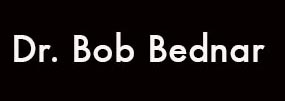| Visual/Material Communication |
 |
   |
| COM 75-474 | Spring 2023 |
| Visual/Material Communication |
 |
   |
| COM 75-474 | Spring 2023 |
key terms/concepts:
mainstream semiotics vs. social semiotics (174; 201-202)
semiotic steps/method (197)
from Saussure:
signifier/signified/sign (177)
referent (178)
paradigm/syntagm (183)
from Peirce:
icon/index/symbol triad (183)
from Barthes:
anchorage/relay (184)
denotation/connotation [AKA denotive/connotive signs] (184)
studium / punctum (185-186)
myth and (naturalized, dominant, common sense) ideology (194-197)
"emptying" denotative meaning, replacing it with myth (194)

from Williamson:
appelation (cf. Althusser's interpellation) (199)
objective correlates (187)
from Hall:
code (192)
encoding/decoding and dominant codes (192-193)
preferred meaning/reading (198)
social semiotics:
semiotic resources (202)
design (202)
modality/multimodality (203)
logonomic system (production regimes & reception regimes) (207)
from Goldman:
visual structure of ads: photo, text/copy, mortise, graphic framing devices (187)
Dyer's sign components:
representations of bodies, manner, activity, and props/setting (179-181)
other semiotics terms from Rose to work through:
ideology (2 different definitions) (172-173)
idiomedia (Barnet) (176)
metonym/synecdoche (184-185)
polysemy (198)
from Jewitt & Oyama's overview of social semiotics:
semiotic resources (134)
representational meaning: narrative vs. conceptual representations (141-145)
interactive meaning: contact (145-6); distance (146-7); POV (147--see also chart, 136)
compositional meaning [see also Kress & van Leeuwen]: information value (147-9); framing (149-150); salience (150-151); modality (151-152)
from Kress & van Leeuwen on composition:
Information Value (see charts on pp. 197, 201, 210)
Left/Right--Given/New (179-185)
Top/Bottom--Ideal/Real (186-193
Center/Margin and Triptychs (polarized and nonpolarized) (194-200)
Salience (201-203)
Framing (203-204)
Reading Path (linear and nonlinear) (204-208)



discussion quotes:
Jewitt & Oyama on how to use semiotic terms/concepts: "Social semiotics is not an end in itself. It is meant as a tool for use in critical research. It only becomes meaningful once we begin to use its resources to ask questions." (136)
Rose: "The distinction between the signifier and the signified is crucial to semiology, because it means that the relation between meanings (signifieds) and signifiers is not inherent but rather is conventional, and can therefore be problematized." (178)
Rose: "If images gain meanings not only from their own signs then, but also from their relation with the signs of other images, it is important to consider what sort of relation to other images is most important for the images you are considering. Is it a relation based on 'content'? Or on shared location of display [or circulation]? Or on explicit cross-referencing?" (192)
Rose: "Is the semiological focus on meaning-making adequate to the character of contemporary advertising?" (212)
Rose on applying semiotics to the analysis of spaces: Apple Store (200-201) and Starbucks (203-206)
Kress and van Leeuwen on the ideology of compositional structures (181)
Workshop Images


Ideal/Real Compositions (cf. Promise/Product)







Given/New Compositions





Polarized and Non-polarized Triptych Compositions


POV: represented Power and involvement







